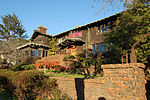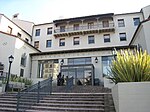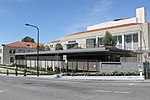Berkeley Piano Club
The Berkeley Piano Club was founded in 1893 by Berkeley women. In 1912 the club built a clubhouse designed by William L. Woollett with an internationally known performance space. It was designated a city historical landmark in 2005. The designation also includes the house, final home of John Galen Howard (his wife was club president from 1911-1913), in an upstairs workshop of which a trigger was designed for the atomic bomb by a Manhattan Project scientist. The landmark designation made the property eligible for state funding and a restoration was also completed in 2005.Nicolas Slonimsky lectured at the clubhouse in 1971.The club published a history for its centennial, The Berkeley Piano Club: One Hundred Years of Harmony by Mary F. Commanday.
Excerpt from the Wikipedia article Berkeley Piano Club (License: CC BY-SA 3.0, Authors).Berkeley Piano Club
Haste Street, Berkeley
Geographical coordinates (GPS) Address Nearby Places Show on map
Geographical coordinates (GPS)
| Latitude | Longitude |
|---|---|
| N 37.866537 ° | E -122.252778 ° |
Address
Haste Street 2728
94720 Berkeley
California, United States
Open on Google Maps









